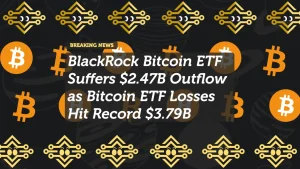
Tether Dominates Crypto-Lending Market as Sector Consolidates
For years, names like BlockFi, Celsius, and Genesis dominated the crypto-lending headlines. But after those firms crumbled under market pressure and mismanagement, an unlikely contender has emerged—and it’s one that few expected.
That contender? Tether—the company behind the world’s largest stablecoin, USDT.
Wait, Tether? Yes.
According to a recent Galaxy Digital report, Tether has become the dominant force in the crypto-lending sector, now holding over 70% of the market share as of Q4 2024. Galaxy, the second-largest lender in the space, acknowledged Tether’s rapid rise during what’s been one of the toughest times for crypto liquidity.
“They started during the downturn… they have probably been a really much-needed source of liquidity in this market,”
— Alex Thorn, Head of Firmwide Research at Galaxy Digital
How Did Tether Claim the Crown?
Let’s rewind a bit. The crypto-lending market peaked at $64.4 billion in Q4 2021, according to the report. But that was before the massive collapses of major lending platforms—BlockFi, Celsius, and Genesis—all of which left holes in the ecosystem and a big trust deficit among investors.
With the lending sector in disarray, Tether quietly stepped in.
Why It Worked:
- Timing: They filled the liquidity vacuum at a moment when everyone else was pulling back.
- Backed by Bitcoin: Tether claims all of its loans are overcollateralized, primarily with BTC.
- Conservative Strategy: Unlike previous lenders that took risky bets with customer funds, Tether’s approach has been cautious. According to their own disclosures, lending activity is kept proportional to the company’s equity reserves.
“All loans are widely overcollateralized and managed conservatively in proportion to our equity reserves,”
— Tether, in a statement to Bloomberg
While they don’t publicly name borrowers or disclose loan structures, the company emphasizes that USDT remains fully and liquidly backed at all times—and that Tether has never defaulted on a loan.
What Does This Mean for the Crypto-Lending Industry?
The crypto-lending industry isn’t what it used to be, but it’s far from dead.
Once boasting tens of billions in capital and a flurry of startups offering double-digit yields, today’s market is leaner, more centralized, and more conservative. Tether’s rise could be a sign that the space is maturing, with a preference for credibility, transparency (to an extent), and collateral discipline.
Here’s a quick breakdown of where the market stands now:
| Year | Market Size | Notes |
|---|---|---|
| Q4 2021 | $64.4 billion | Pre-collapse of BlockFi, Celsius, Genesis |
| Q4 2024 | ~$32 billion | Market has halved, but stabilizing |
Galaxy and Ledn, another major player in the space, still hold a slice of the market—but Tether’s lead is significant.
Key Takeaways: Tether’s New Role in a Shifting Landscape
- Tether isn’t just a stablecoin issuer anymore. It’s become a key liquidity provider in a post-collapse crypto lending environment.
- The lending market has shrunk, but it’s also arguably become safer, more conservative, and better collateralized.
- Tether’s dominance shows that trust and timing matter—especially when everyone else is pulling back.
- Transparency remains a concern. Tether’s refusal to disclose borrower details leaves some questions unanswered, though it hasn’t hindered their rise.
Looking Ahead: Is This the Future of Crypto Lending?
The current lending landscape is no longer driven by aggressive yield farming or risky lending against volatile altcoins. Instead, Bitcoin-backed loans and stablecoins are taking center stage, backed by more experienced firms and larger balance sheets.
Tether’s emergence is more than just a pivot—it’s a reshaping of crypto-lending as we know it.
What happens next could hinge on:
- Regulatory clarity for stablecoins and lending
- Continued trust in Tether’s reserves and risk management
- Whether new decentralized lending platforms can offer real competition
If Tether can maintain its conservative lending model and continue meeting liquidity demands, it may hold this top spot for some time. But one thing’s for sure—the next phase of crypto lending is here, and it’s being led by a company that started with stablecoins and is now stabilizing the lending space itself.
Let me know if you’d like a follow-up blog on how Tether’s lending model works under the hood, or a comparison with decentralized alternatives like Aave and Compound.
















